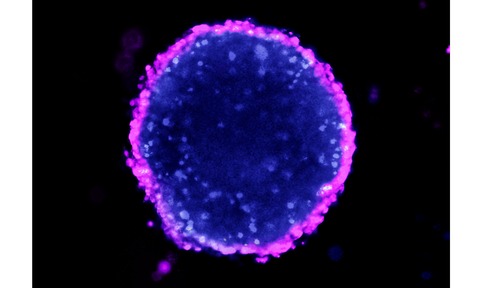
Amsbio’s Lipidure-Coat low adhesion plates and dishes are available in 384-well format optimised for drug screening or other high throughput applications.
Spheroid cell culture is based on the spontaneous formation of an aggregation of cells in an environment where the interactions between cells are superior to the interactions between cells and substrate.
This can be achieved by using low-adhesion cell culture conditions.
Lipidure-Coat surfaces use MPC (2-methacryloyloxtethyl phosphorylcholine), a biocompatible synthetic polymer with the same structure as the phosphorylcholine polar bases that form cell membranes.
Because of the high biocompatibility of this coating, cells will not adhere to the surface of Lipidure-Coat plates or dishes.
Different well-shapes available for 96-well plates (U, V and flat-bottom) can be used to control size, position and density of spheroids.
Amsbio claims studies have shown that Lipidure-Coat promotes the formation of a single spheroid in each well of U-bottom multi-well plate, compared with the formation of satellite spheroids in some other products - indicating a higher degree of cell adhesion is taking place.
Formation of spheroids, tumorspheres, embryonic bodies and neurospheres using Lipidure plates has already been demonstrated for cell types including ES and iPS (human and mouse), NIH3T3, pre-adipocytes, HepG2 and other cancer cell lines as well as primary neuronal cells.




